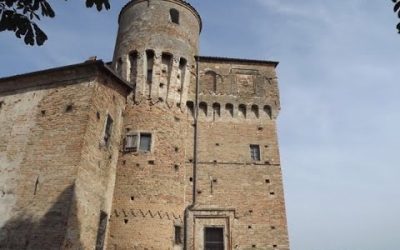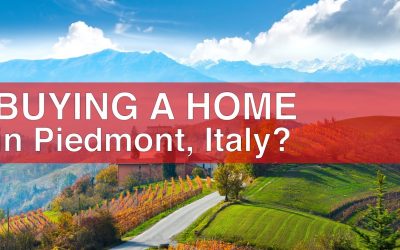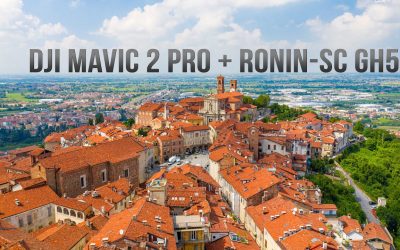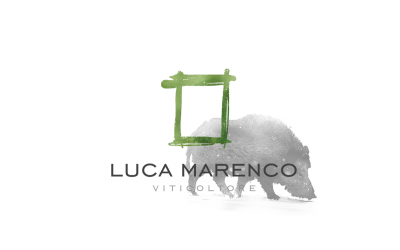Barolo Travel Guide 2023: Where to stay, wineries
Barolo, a gem nestled in Italy’s Piedmont region, is an embodiment of centuries-old wine traditions and charming Italian landscapes. Often referred to as ‘The Wine Town’, Barolo is sought-after by wine enthusiasts worldwide. But when should you visit, and what makes Barolo such an enticing destination? This guide answers these questions and more.
Comprehensive Travel Guide to Barolo 2023
Barolo, renowned for its exquisite wines, is a must-visit destination for every wine lover. The best time to visit Barolo is during the harvest season in late summer and early autumn. The town is located in the Piedmont region, encompassing 11 beautiful villages with a rich history and wine tradition. This table gives a quick overview of the main points discussed in our detailed Barolo travel guide. Barolo, located in the beautiful Piedmont region of Italy, is home to around 500 wineries specializing in Barolo wine, made from Nebbiolo grapes.
The best time to visit Barolo is during the harvest season in September and October, where you’ll have the chance to witness the wine-making process first-hand and participate in various wine festivals. You’ll also get to explore the notable towns of Barolo like La Morra, Castiglione Falletto, and Serralunga d’Alba, each offering their unique charm and attractions. Barolo wine, referred to as the “King of Wines,” is renowned for its high quality, complex flavors, and incredible aging potential. It pairs well with rich and flavorful foods, such as truffles, braised beef, risotto, and aged cheeses, providing a unique gastronomic experience.
Remember, the best temperature to drink Barolo is slightly below room temperature, between 16 and 18 degrees Celsius, to allow the wine’s complexity and rich flavors to shine. If you’re looking to experience the charm of Barolo and the grandeur of its wine, our detailed guide provides a comprehensive overview to help plan your trip.
General Information about Barolo
| Key Points | Information |
|---|---|
| Location | Barolo, Piedmont region, Italy |
| Best Time to Visit | September and October, during harvest season |
| Notable Towns | La Morra, Castiglione Falletto, Serralunga d’Alba |
| Number of Wineries | Approximately 500 |
| Specialty | Barolo wine, made from Nebbiolo grapes |
| Pairing Suggestions | Truffles, braised beef, risotto, aged cheeses |
| Drinking Temperature | 16-18°C (60-64°F) |
| Aging Potential | 10-15 years or more |
| Why is it special? | High quality, complex flavors, aging potential |
What is the best time of year to visit Barolo?
The enchanting town of Barolo in Italy’s Piedmont region is a must-visit for wine lovers, offering a rich history, stunning landscapes, and, of course, its world-renowned wines. But when is the best time to visit Barolo? Let’s delve into this question.
Climate Considerations
Barolo, like the rest of the Piedmont region, experiences a continental climate with cold winters and hot summers. The average summer temperature can go up to 28°C (82°F), while the winter temperature drops to around 4°C (39°F). The most pleasant weather can be found in the transitional seasons – spring (April to June) and autumn (September to November), when temperatures are typically moderate and the vineyards are at their most picturesque.
- Spring: Springtime, particularly late spring (late May to early June), offers mild temperatures and the vineyards begin to come alive with greenery. This period also coincides with the release of the latest Barolo vintage in Alba’s wine shops and tasting rooms, offering an exciting time for oenophiles.
- Autumn: This is arguably the best time to visit Barolo. The harvest typically takes place in late September to October. During this time, the vine leaves transform into a stunning palette of reds and oranges, providing an unforgettable backdrop to the vineyards. Moreover, autumn is the season of Alba’s famous International White Truffle Fair, an event that attracts food and wine enthusiasts from around the world.
Event Considerations
Apart from the changing seasons, planning your visit around local events can enhance your experience. Here are a couple of noteworthy events:
- Collisioni Festival: Usually held in July, the Collisioni Festival is one of Italy’s most significant cultural events. This event is a unique blend of literature, music, food, and wine that transforms Barolo into a vibrant cultural hub for a few days.
- Alba International White Truffle Fair: If your visit falls in autumn, don’t miss this renowned festival held in the nearby town of Alba. It runs from early October to mid-November and offers a great opportunity to indulge in exquisite truffle-based dishes and fine wines.
Given these factors, planning your visit between late spring and autumn would ensure a comfortable climate and a chance to participate in local events, making for a truly immersive experience in Barolo. Always remember to check event dates and weather updates closer to your visit to get the most out of your Barolo trip.
Where to stay in Barolo?
| Category | Accommodation Name | Details |
|---|---|---|
| 🍷 Exploring the Luxury of Barolo | Palas Cerequio | A luxurious charm resort located in the heart of Barolo’s wine region. Average price: $300 per night |
| Castello di Sinio | Luxury hotel with restaurant, located 20km away from Barolo. Average price: $250 per night | |
| ⛰️ Best Resorts within 20 km of Barolo | Relais San Maurizio | Located in Santo Stefano Belbo, less than 20 km from Barolo, it offers spa treatments and a Michelin-starred restaurant. Average price: $200 per night |
| Il Boscareto Resort & Spa | Luxury resort in Serralunga d’Alba, with a spa, restaurant, and vineyard views. Average price: $220 per night | |
| 🏨 Boutique Hotels and B&Bs | Nel Centro di Alba | Located in the heart of Alba, this B&B offers elegance and comfort with a central location. Average price: $120 per night |
| Locanda del Pilone | A charming boutique hotel with panoramic views over Barolo’s vineyards. Average price: $150 per night | |
| 🌳 Family-friendly Agriturismo | Agriturismo Cascina Sot | Offers an authentic farm-stay experience with local cuisine and activities for children. Average price: $100 per night |
| Agriturismo La Rosa nel Bicchiere | Ideal for families, offers wine tastings and walks in the vineyards. Average price: $80 per night | |
| 🍇 Accommodations with Vineyard Views | Barolo Rooms Affittacamere | Offers breathtaking views of Barolo’s vineyards from its elevated position. Average price: $130 per night |
| Cascina Baràc | Offers comfortable accommodations with panoramic views of the vineyards. Average price: $120 per night | |
| 🐾 Pet-Friendly Accommodations in Barolo | La Giolitta B&B | A cozy country house that welcomes pets, with comfortable rooms and an excellent breakfast. Average price: $90 per night |
| Hotel Villa Beccaris | This pet-friendly hotel offers a spectacular view over the Langhe. Average price: $150 per night | |
| 💰 Affordable Stays around Alba and Barolo | Albergo San Lorenzo | Located in the center of Alba, offers a comfortable stay at an affordable price. Average price: $70 per night |
| Albergo Cantine Ascheri | Mid-range hotel in Bra, a short drive away from Barolo, with an attached wine cellar. Average price: $75 per night |
Please note that prices are indicative and may vary depending on the time of year and availability. It’s always best to check the latest rates directly with the accommodation.
What to do in November during Alba white truffle fair

The Alba White Truffle Fair (Fiera Internazionale del Tartufo Bianco d’Alba) is a significant event held annually in Alba, Piedmont, during October and November. It draws food enthusiasts from around the globe who come to enjoy, buy and learn about the celebrated white truffle. Here are some of the key things you can do during the fair:
1. Visit the Truffle Market: The heart of the fair is the World Market of the White Truffle of Alba, where you can see, smell, and buy white truffles. There, you’ll find truffle hunters and their truffles, and you can even negotiate prices. It’s an incredible experience, even if you’re not planning on buying a truffle.
2. Attend the Truffle Sensory Analysis: At the Truffle Sensory Analysis, experts will guide you in understanding the complex aromas and characteristics of the white truffle. This is an excellent opportunity to learn from professionals how to choose truffles and pair them with food and wine.
3. Enjoy Truffle-Based Dishes: Many local restaurants offer special truffle menus during the fair. This is a wonderful opportunity to sample this culinary delicacy in a variety of traditional Piedmontese dishes.
4. Participate in Wine Tasting and Tours: Piedmont is famous for its wines, including Barolo and Barbaresco. Many local wineries offer tastings and tours, which will allow you to deepen your knowledge of these excellent wines and learn how they can be paired with truffles.
5. Explore the Historic Town: Alba itself is a charming town with a rich history. Take time to explore its medieval towers, Roman ruins, and churches. The town center also has many delightful shops where you can buy local products.
6. Attend Cooking Demonstrations: There are often cooking shows and demonstrations featuring Italian and international chefs. These can be a fantastic opportunity to learn how to use truffles in your cooking.
7. Visit the Alba White Truffle Show: The Alba White Truffle Show offers a rich program of events, including meetings with chefs and sommeliers, show cooking, tastings, and sensory workshops.
Remember that the fair can be crowded, especially on weekends, so it’s a good idea to plan your visit and book accommodations and restaurant tables in advance.
Is Barolo worth visiting?
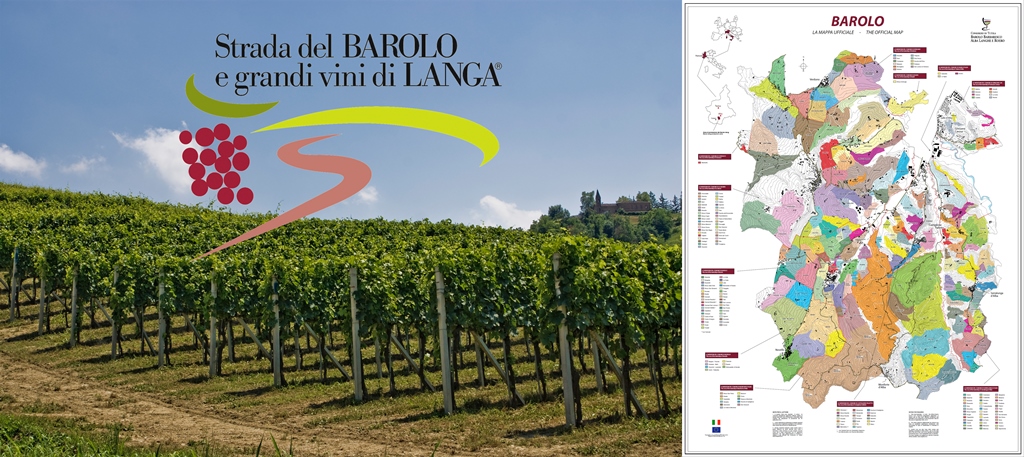
Absolutely, Barolo is well worth visiting, especially if you are a wine lover. It’s often referred to as the ‘wine capital of the world,’ and for good reason. The village is nestled in the beautiful rolling hills of Piedmont, in the Langhe region of northern Italy, and is world-renowned for its production of the Barolo wine, made from the Nebbiolo grape. Discover where to stay in Barolo and the Best Barolo Wine Tours.
Here are a few reasons why Barolo is a must-visit:
Wine: If you’re a wine enthusiast, Barolo is a dream come true. The region is famous for its high-quality Barolo wines. You can visit various wineries, explore vineyards, and indulge in wine tasting sessions, gaining insights into the production process of this prestigious wine.
Scenery: The landscape in and around Barolo is breathtaking, with endless vineyards, charming Italian architecture, and panoramic views of the Langhe hills. It’s the perfect place for nature lovers and photographers.
Food: Italian cuisine needs no introduction, and in Barolo, you’ll get to experience some of the best. The region is renowned for its white truffles, cheeses, and other local delicacies. Combined with a glass of Barolo wine, it’s a gastronomic experience you won’t forget.
History and Culture: Barolo is rich in history, evident in its castles, museums, and architecture. The Castle of Barolo, which houses the Wine Museum (WiMu), is a popular tourist spot. You can immerse yourself in the local culture and traditions, getting a real sense of Italian life.
Events: The region hosts several wine-related events throughout the year, the most famous being the Barolo Wine Festival in July and the Alba White Truffle Fair in autumn.
In summary, with its spectacular landscapes, world-class wines, delicious food, and rich cultural heritage, Barolo is a destination that promises a delightful and memorable experience.
Best things to do in Barolo
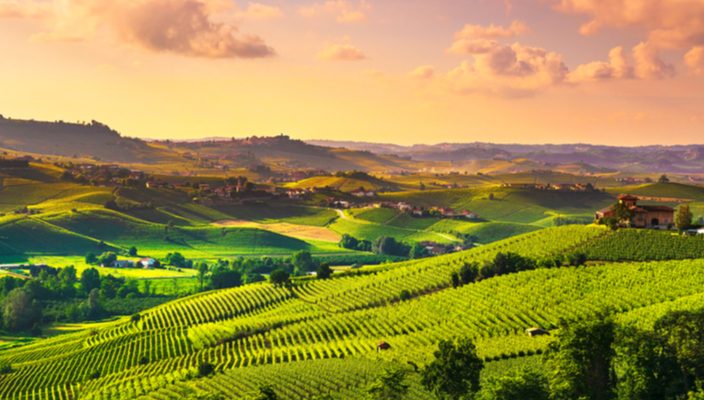
Visiting Barolo, in Italy’s Piedmont region, is a must for any wine lover. The village and surrounding countryside are beautiful, and there’s plenty to see and do. If you’re planning a trip to Barolo, a 2-day wine tour is the perfect way to immerse yourself in the region and its most famous export.
On these tours, you can visit wineries such as Luca Marenco Viticoltore, a winery dedicated to producing high-quality, organic Barolo wines. Here, you can tour the vineyards, see the winemaking process in action, and sample some of their best wines. It’s a wonderful way to learn more about the work that goes into making some of the world’s finest wines. Another stop on the tour is Cantina Borgogno Francesco, a family-run winery known for its superior Barolo wines and welcoming atmosphere. You’ll get the chance to meet the people behind the wines, hear their stories, and of course, taste their fantastic Barolo.
But Barolo isn’t just about wine. It’s also home to a vibrant artistic community. A visit to Purpleplace, Casa Studio Di PURPLERYTA, the home and studio of the artist PURPLERYTA, is a chance to see a different side of Barolo. The studio is full of color and creativity, offering a unique contrast to the traditional vineyards and wineries. After visiting the wineries and Purpleplace, you can enjoy the natural beauty of the region, explore the village, have truffle hunting experience in Alba, Cooking class and try the local cuisine in one of the best Michelin starred restaurant in Piedmont (in total are more the 40). And of course, there will be plenty of opportunities to taste more Barolo wine. So, if you’re a wine lover looking for a unique travel experience, a 2-day Barolo wine tour could be just what you’re looking for. You can find more information about these tours and how to book them on our website here.
What are the guidelines for Barolo?
When talking about “guidelines” for Barolo, we’re typically referring to the winemaking rules and regulations put forth by the Consorzio di Tutela Barolo Barbaresco Alba Langhe e Dogliani, the regulatory council for wines of the region. Here you can find the Barbaresco Travel Guide.
Barolo is a Denominazione di Origine Controllata e Garantita (DOCG) wine, the highest classification for Italian wines, and there are stringent rules that producers must follow. Here are the key guidelines:
- Grape Variety: Barolo must be made 100% from the Nebbiolo grape. No other grape varieties are allowed.
- Geography: Barolo can only be produced in 11 specific communes of the Langhe area in the Piedmont region: Barolo, La Morra, Castiglione Falletto, Serralunga d’Alba, Diano d’Alba, Grinzane Cavour, Monforte d’Alba, Novello, Cherasco, Verduno, and Roddi.
- Yield: There is a maximum yield of 8 tons per hectare.
- Vinification and Aging: Barolo must be aged for at least 38 months from the 1st of November in the year of harvest. At least 18 months of this aging must be in wooden barrels. Riserva Barolo requires 62 months of aging.
- Alcohol Content: The minimum alcohol content for Barolo is 13%.
These guidelines are intended to preserve the traditional characteristics of Barolo, protect its reputation, and ensure the highest quality in each bottle. Discover the best guide to Barolo 2016.
What are the 11 towns of Barolo?
The Barolo wine region, located in the Langhe area of Piedmont, Italy, encompasses 11 distinct municipalities or towns. Each of these towns is recognized for its unique terroir, contributing to the diversity of Barolo wines. Here are the 11 towns of Barolo:
- Barolo: The namesake town of the region, Barolo is steeped in history and is home to several renowned vineyards. It’s approximately a 20-minute drive from Alba and around an hour’s drive from Turin. You can also take a train from Turin to Alba and then a taxi or local bus to Barolo.
- La Morra: Known for producing more fragrant and elegant styles of Barolo due to its calcareous soil. It’s about a 15-minute drive from Barolo.
- Serralunga d’Alba: Wines from here are typically more robust and structured, thanks to the area’s sandstone and limestone-rich soils. This town is approximately a 10-minute drive from Barolo.
- Castiglione Falletto: Located in the heart of the Barolo area, this small town produces balanced wines. It’s about a 10-minute drive from Barolo.
- Monforte d’Alba: Known for its well-structured wines with high tannins. It’s around a 15-minute drive from Barolo.
- Novello: Located southeast of Barolo, it’s gaining recognition for its elegant wines. Novello is around a 10-minute drive from Barolo.
- Verduno: Known for its lighter, more delicate style of Barolo and also produces the rare Pelaverga wine. It’s a 20-minute drive from Barolo.
- Grinzane Cavour: Famous for the castle that housed Camillo Benso, Count of Cavour, who was a key figure in the production of Barolo. This town is around a 15-minute drive from Barolo.
- Roddi: Although not as well-known as the other towns, Roddi has been part of the Barolo wine region since 2010. It’s about a 20-minute drive from Barolo.
- Cherasco: Recognized as a part of the Barolo area in 2010 and adds its unique touch to the Barolo landscape. It’s approximately a 25-minute drive from Barolo.
- Diano d’Alba: Traditionally known for its Dolcetto wines but now also contributes to Barolo production. It’s around a 15-minute drive from Barolo.
For convenient travel, we recommend hiring a private taxi or even better, join one of our Private Barolo Wine and custom tours where transport between towns and wineries is taken care of, ensuring a stress-free and enjoyable wine experience in the beautiful Barolo region.
What are the 5 main villages of Barolo?
Barolo wine is produced in 11 communes of the Langhe area in the Piedmont region, but five of them are often considered the “main” or “most prestigious” villages due to their history, the quality of their terroir, and the reputation of the wines they produce. These five are Barolo, La Morra, Castiglione Falletto, Serra Lunga d’Alba e Monforte d’Alba.
- Barolo: The village that lends the wine its name, Barolo is home to several renowned vineyards and is considered by many to be the heart of the Barolo region.
- La Morra: Known for its wines that are more perfumed and softer in texture, making them quite approachable. The vineyards here are some of the largest in the region.
- Castiglione Falletto: Wines from this area are known for their balance, combining the elegance of La Morra’s wines with the power of Serralunga d’Alba.
- Serralunga d’Alba: This area’s wines are often the most robust and long-lived of the Barolos, with powerful structure.
- Monforte d’Alba: Monforte’s wines are known for their robust structure and rich flavors, similar to Serralunga but with a bit more spice.
Each of these villages produces unique expressions of Nebbiolo, making the exploration of Barolo a diverse and rewarding experience for wine lovers.
How far is Florence from Barolo?
Florence, a gem of Tuscany, is approximately 300 kilometers or about 186 miles away from Barolo, in the Piedmont region. If you’re planning a road trip, this journey can take around 4 to 5 hours, depending on traffic and the route you choose. If you’re traveling by train, expect to spend around 5 hours in transit, taking into account potential transfers.
Visiting Barolo from Florence gives you a fantastic opportunity to experience two of Italy’s most celebrated wine regions: Tuscany and Piedmont. Both regions offer distinct wine styles and culinary traditions, making it a truly enriching experience for food and wine enthusiasts.
But while you’re in Florence, why not take advantage of another unique experience – truffle hunting! The Florence Truffle Hunting & Chianti Experience tour is an exceptional way to delve into Tuscany’s culinary and natural beauty. You get to hunt for truffles in the charming Tuscan countryside and then savor your finds during a delightful meal. It’s a splendid activity that combines adventure, gastronomy, and stunning landscapes. And with a reduced price from €200 to €160 for a two-hour experience, it’s a tempting addition to any Tuscan itinerary.
Once you’ve had your Tuscan adventure, you can then set off north to the rolling vineyards of Barolo, where the robust and complex Nebbiolo wines await.
What is the nickname of Barolo?
Barolo is often referred to as the “King of Wines and the Wine of Kings.” This nickname originates from the fact that Barolo has long been associated with the royal court of the House of Savoy. The high quality and longevity of this Nebbiolo-based wine have earned it a distinguished reputation in the world of wines, giving it its regal nickname. This strong, full-bodied, and complex wine truly lives up to its royal title.
Barolo Wineries and Vineyards

How organize your private Barolo wine tour? Barolo’s wineries, with their historic charm and globally renowned wines, offer an immersive journey into the world of winemaking. From the processes that birth these exquisite wines to the regional nuances that influence their flavor profiles, exploring Barolo’s wineries is a fascinating experience. Here, we address some common questions to help you plan your wine tour.
Visiting wineries in Barolo is a delightful experience that often includes vineyard tours and tastings. The Barolo region is home to hundreds of wineries, with some of the best wines coming from towns like Barolo and Serralunga d’Alba. Barolo and Barbaresco, although close in proximity, produce distinct wines due to differences in their terroir.
How do you visit wineries in Barolo?
Visiting wineries in Barolo can be an enriching experience that combines the beauty of the Piedmont region with the world-renowned Barolo wine. Before you visit, it is advisable to do some research and make a reservation, as some wineries may not accommodate walk-in visitors. The wineries offer guided tours where you can learn about the wine-making process and the history of Barolo wine. After the tour, there is usually a wine tasting session where you can sample various wines, including their signature Barolo.
- Plan Ahead: Wineries in Barolo often require you to book a visit in advance. This can be done via their website or by contacting them directly. It’s essential to check their visiting hours and to see if they offer tours in your language.
- Research: Look into the specific wineries you wish to visit. Each winery has a unique history, and their wines can be quite different, depending on their vineyard location and winemaking techniques.
- Guided Tours: Many wineries offer guided tours where you can learn about the winemaking process and the history of Barolo. These tours often end with a tasting session where you can sample a variety of their wines, including their signature Barolo.
- Wine Tasting: When you attend a tasting, take your time to savor each wine and don’t hesitate to ask questions. The staff at the wineries are usually very knowledgeable and happy to share their insights.
- Enjoy the Region: While the wine is the main attraction, don’t miss out on the stunning views of vineyards, medieval castles, and the Alps.
For a seamless and unforgettable experience, you might want to consider our customized tours at Albacitytours.com. Our tours are designed to offer a personalized and enriching journey through the world of Barolo. Our expert guides can provide deep insights into the region and its wines, and our tours often include visits to multiple wineries, vineyard walks, and local gastronomic experiences. Enjoy the best of Barolo without having to worry about the details!
Do you need reservations for wineries in Barolo, Italy?
Yes, it is highly recommended to make reservations when planning to visit wineries in Barolo, Italy. Many wineries, especially the smaller and more popular ones, require advance booking to accommodate guests. This is mainly to ensure that they can provide a personalized experience for each visitor, which often includes a tour of the winery and a tasting session.
Booking in advance is even more crucial during special events and peak seasons, such as the Alba White Truffle Fair held every autumn. During this period, the region attracts a high volume of tourists, resulting in many wineries being fully booked.
To ensure your spot and to enjoy the best that Barolo’s wineries have to offer, we recommend booking your visit or tour well in advance. Feel free to contact us for personalized assistance with your wine tour in the Barolo region. We’re here to make your wine discovery experience unforgettable. Contact us to get started!
How many wineries are there in Barolo?
The Barolo wine region has about 500 wineries. However, not all of them are open to the public or offer tours and tastings. It is advisable to research and make a list of the wineries you want to visit. Some of the well-known wineries in Barolo include Marchesi di Barolo, Paolo Scavino, and Poderi Einaudi.
Where does the best Barolo come from?
Barolo wine, one of the most prestigious Italian wines, comes from the Piedmont region in northwestern Italy. However, the quality and character can vary widely depending on the specific area within the region and the winemaking techniques used.
Barolo is made exclusively from the Nebbiolo grape, a variety native to Piedmont that produces wines of great complexity and longevity. The Barolo region is divided into 11 communes, each with its unique terroir that influences the character of the wines produced there.
Here are some of the most notable communes:
- Barolo: This commune gives the wine its name and is known for producing powerful, full-bodied Barolo with high levels of tannin.
- La Morra: Wines from La Morra are typically more perfumed and graceful, with softer tannins compared to other areas.
- Castiglione Falletto: This area produces balanced Barolo with good structure and complexity.
- Serralunga d’Alba: This commune is known for its full-bodied, powerful, and long-lived Barolo wines.
Just northeast of Barolo lies the Barbaresco region, another key area in Piedmont for Nebbiolo wines. The Barbaresco appellation is smaller and has three main villages: Barbaresco, Neive, and Treiso.
Barbaresco wines are often compared to Barolo, and while they are also made from Nebbiolo, they generally have a different expression. Barbarescos are typically less tannic, more elegant, and reach maturity faster than Barolos.
The differences between Barolo and Barbaresco arise from variations in soil type, microclimate, and winemaking traditions. While both regions produce world-class wines, their unique characteristics offer wine lovers a rich diversity of expressions of the Nebbiolo grape.
How far apart are Barolo and Barbaresco?
Barolo and Barbaresco, two of the most prestigious wine regions in Italy’s Piedmont area, are located approximately 16 kilometers apart. Both regions are revered for their wines made from the Nebbiolo grape, yet they are distinct due to variations in soil, altitude, and microclimates, contributing to the unique characteristics of their wines.
What is the difference between Barbaresco and Barolo and region?
While both Barolo and Barbaresco produce wines predominantly from Nebbiolo grapes, their terroir (a French term referring to the environmental factors that affect a crop’s phenotype) varies significantly, leading to distinct wines.
Barolo wines are often fuller-bodied, with high tannins and acidity, and require longer aging periods. This is partly due to the region’s soil composition, predominantly consisting of clay and marl, contributing to the complexity and robustness of Barolo wines.
On the other hand, Barbaresco’s soil has a higher concentration of limestone, leading to wines that are generally more elegant and approachable at a younger age than Barolo wines. Barbaresco’s wines also have high tannins and acidity but are known for their refined character and softer finish.
All you need to know about the Piedmont wine area: Barolo & Barbaresco
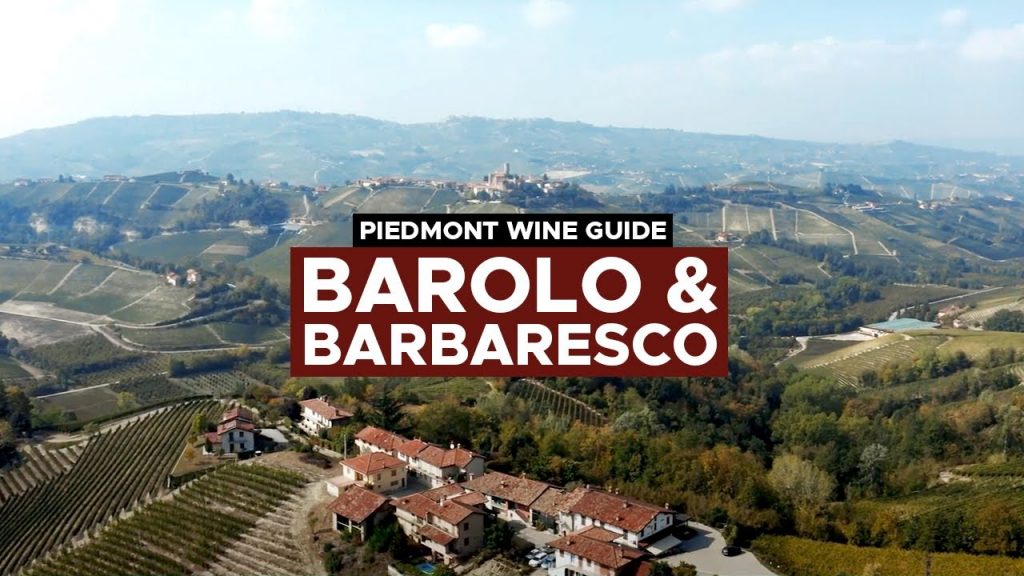
What is special about Barolo wine?
Often referred to as the “King of Wines,” Barolo is one of Italy’s most prestigious wines, globally acclaimed for its exceptional quality and intriguing complexity. Here’s a look at what makes Barolo wine so special:
- Nebbiolo Grape: Barolo wine is made exclusively from the Nebbiolo grape, a variety indigenous to the Piedmont region. Nebbiolo, named after ‘nebbia’ (Italian for fog), ripens late in the season with harvests typically in October when morning fogs are common. The grape’s characteristics impart Barolo wines with a unique blend of robust tannins and high acidity, promising a great aging potential.
- Aging and Classification: By Italian wine law (Denominazione di Origine Controllata e Garantita – DOCG), Barolo must age for at least 38 months after the harvest before release, of which 18 months must be in wooden barrels. Riserva Barolos require 62 months of aging. This extensive aging process contributes to Barolo’s rich and complex character.
- Terroir Influence: The Barolo wine region, a part of the Langhe area in Piedmont, is characterized by varying microclimates and soil compositions across different ‘crus’ or vineyards. The vineyards located on the hills of the region have a primarily clay and limestone soil, which imparts a unique minerality and sophistication to the wine.
- Aromas and Flavors: Barolo wines offer a powerful bouquet and a wide spectrum of flavors. These wines typically possess aromas of roses, cherries, and red fruits when young, which evolve into complex notes of tar, leather, truffle, and even forest floor as the wine ages.
- Food Pairing: The high acidity and tannin content in Barolo make it a perfect pairing for rich, fatty foods, such as truffles, braised meats, and heavy pasta dishes. This makes it not just a wine, but a vital component of a gastronomic experience.
In conclusion, Barolo wine stands out due to the unique Nebbiolo grape, the specific terroir of the region, the rigid aging and classification laws, and the resultant complex aromas and flavors. Whether you’re a wine aficionado or a casual enthusiast, exploring Barolo’s enigmatic profile is an enriching journey into the heart of Italian wine tradition.
Why is Barolo so expensive?
The high price of Barolo can be attributed to several factors: the specific growing conditions required by the Nebbiolo grape, the strict production rules in the Barolo DOCG, the wine’s lengthy aging process, and the high demand coupled with limited production.
Italy’s Barolo wine, often referred to as the “king of wines,” is made from the Nebbiolo grape, a variety that is notoriously finicky and requires particular conditions to flourish. It’s also a time-consuming wine to produce. Barolo wines must be aged for at least 38 months after the harvest, with 18 months in oak barrels, contributing to higher production costs. Additionally, the Barolo region’s production quantities are limited, making the supply scarce against high demand, thus raising the price.
Why is Barolo so special?
Barolo’s uniqueness stems from its deep connection to the terroir of the Langhe region in Piedmont, Italy, and its use of the Nebbiolo grape. This grape variety, which thrives only under very specific growing conditions, produces wines that are rich in tannins and acidity, with complex flavors that can evolve over decades. Barolo’s production rules, which require lengthy aging periods, also contribute to creating a wine with a remarkable depth and complexity of flavor.
Example: It’s a bit like finding an old book in a library that tells a story from a time and place very different from your own. As you turn each page, you’re drawn into the tale, discovering new details and complexities. That’s what it’s like to sip on Barolo – it’s an adventure in every glass, a journey through the hills of Langhe. Join us on a Barolo wine tour and experience this magic firsthand!
Is Barolo an expensive wine?
Barolo is considered one of the finest and most expensive wines of Italy. The cost is influenced by several factors. First and foremost, Barolo is made from the Nebbiolo grape, which is notoriously difficult to cultivate and requires meticulous care. Moreover, the wine-making process for Barolo is labor-intensive and time-consuming, with mandatory aging periods that extend for several years. The high demand coupled with the limited supply, owing to the small geographical area of production, also contributes to its high price. However, it’s important to note that the price of a bottle of Barolo can vary greatly depending on the producer, the vintage, and the specific vineyard.
Which is more expensive Barolo or Brunello?
Both Barolo and Brunello are considered high-end Italian wines, and prices can vary widely depending on the producer, the quality of the vintage, and the age of the wine. The price of a bottle of Barolo can range from around $50 for a young or less well-known producer, to several hundred dollars for a bottle from a top producer in a good vintage. Some extremely rare or aged Barolos can even cost thousands of dollars per bottle.
Brunello di Montalcino, on the other hand, usually starts at around $50 for a bottle from a decent producer and can go up to a few hundred dollars for a top-quality bottle.
These prices can vary widely depending on where you’re purchasing the wine, and prices may have changed after my last training data in September 2021. It’s always a good idea to check with local wine shops or online retailers for the most current prices. Remember, a higher price doesn’t necessarily mean a better wine – it’s all about your personal preference!
Is a Barolo like a pinot noir?
While Barolo and Pinot Noir are both red wines with high acidity, they are quite distinct. Barolo, made from the Nebbiolo grape, is known for its rich, tannic character and complex flavors of red fruits, roses, and often tar or truffles. Pinot Noir, on the other hand, is generally lighter in body with soft tannins and flavors of red fruits, flowers, and sometimes earthy notes.
Italian Law Reference: Under the Italian wine law, DOC (Denominazione di Origine Controllata), each wine is required to be produced in a specific way and from specific grape varieties. Barolo and Pinot Noir are made under different DOC rules, meaning they have different flavor profiles, aging potential, and food pairing suitability.
Can you drink Barolo without food?
Barolo, with its high tannins and acidity, is often enjoyed with food, particularly dishes rich in proteins and fats, which help to soften the wine’s robust structure. However, it’s also possible to enjoy Barolo without food, particularly if the wine has been properly aged, as aging helps to mellow the tannins.
Example: Imagine savoring a piece of dark chocolate — its rich, complex flavors can be enjoyed on their own, yet it also pairs wonderfully with certain foods. Similarly, an aged Barolo can stand alone as a flavorful journey, but it also shines when paired with dishes like truffle pasta or braised meats. On our wine tours, we’ll guide you through these pairing nuances!
Is Barolo like Cabernet Sauvignon?
Barolo and Cabernet Sauvignon are two distinct wine varieties with different flavor profiles. Barolo, made from Nebbiolo grapes, is known for its high acidity and tannins, with flavors of cherry, rose, and often anise, truffle, or tar. Cabernet Sauvignon, often bolder and fruitier, features flavors like black currant, bell pepper, and often oak-derived notes such as vanilla.
What is most similar to Barolo?
If you’re looking for a wine similar to Barolo, Barbaresco is an excellent option. Both wines are made from Nebbiolo grapes and come from the Piedmont region in northern Italy. Like Barolo, Barbaresco is known for its complexity and aging potential. However, Barbaresco tends to be more approachable in its youth, with softer tannins and a lighter body. Other similar wines include Amarone della Valpolicella from Veneto, Italy, and Pinot Noir from Burgundy, France, both of which share Barolo’s depth and complexity, albeit with different flavor profiles.
What is the difference between Nebbiolo and Barolo?
Nebbiolo is a grape variety, while Barolo is a wine named after the region where it’s produced. Nebbiolo is one of the most prestigious grape varieties in Italy and is known for its high tannins, high acidity, and distinctive flavors of cherry, rose, and tar. It’s used to produce several wines, including Barolo and Barbaresco. Barolo is made from 100% Nebbiolo and is known for its powerful tannins, complex flavors, and great aging potential. It’s often referred to as the “king of wines” and is among the most celebrated wines in Italy.
Should Barolo be chilled?
Barolo, like most red wines, is best served slightly below room temperature, typically around 16-18°C (60-64°F). Chilling it excessively can suppress its flavors and aromas. However, if you’re in a warm climate and your Barolo is too warm, you may want to chill it lightly to bring it to the optimal temperature. As with any wine, personal preference plays a significant role, so feel free to experiment to find the temperature that you enjoy most.
What is the world’s most expensive Barolo?
The price of Barolo can vary significantly based on factors such as the producer, the vintage, and the specific vineyard. However, some of the most expensive Barolo wines come from acclaimed producers like Giacomo Conterno and Bruno Giacosa. For instance, Giacomo Conterno’s Barolo Riserva Monfortino is often cited as one of the world’s most expensive Barolos, sometimes fetching several hundred or even over a thousand euros per bottle, especially for sought-after vintages. But remember, while these prestigious wines command high prices, there are also many excellent Barolo wines available at more accessible price points.
Does Barolo need to breathe?
Yes, Barolo benefits greatly from aeration before drinking. Its high tannins and complex flavors are better expressed after it has had a chance to breathe. Typically, it’s recommended to decant a Barolo for at least 2-3 hours before serving.
Example: Just like how a play gets better as the actors warm up, so does a Barolo with a little air. And with our wine tours, we’ll make sure each tasting is optimally timed for your enjoyment!
How long to open Barolo before drinking?
It’s recommended to open a bottle of Barolo at least 2-4 hours before drinking to allow the wine to breathe. Some particularly robust or young Barolos may benefit from even longer aeration. However, this can depend on the specific wine and your personal taste preferences. When in doubt, taste the wine periodically after opening to see how it’s developing.
How long should you decant a Barolo?
Decanting time for a Barolo can vary based on the wine’s age and structure. As a general rule, younger, more tannic Barolos can be decanted for 2-3 hours, while older, more delicate vintages might require less time. However, the optimal decanting time can be a matter of personal preference. It’s often a good idea to taste the wine at different stages of decanting to determine when it’s ready for your palate.
Which is more expensive Barolo or Barbaresco?
Both Barolo and Barbaresco can be quite expensive due to their high quality and the rigorous production regulations in their respective regions. However, on average, Barolo, often referred to as “the king of wines,” can be more expensive, particularly for top vintages and producers.
Do I need to decant Barolo?
Yes, decanting is generally recommended for Barolo. The process of decanting allows the wine to mix with oxygen, helping to soften its high tannins and enhance its complex aromas and flavors. It’s typically suggested to decant a Barolo for 2-3 hours before serving.
Should you let a Barolo breathe?
Yes, allowing Barolo to breathe before drinking enhances its taste and aroma. Barolo is known for its high tannin content, which softens with exposure to air. Decanting and letting it breathe for about 2-3 hours before drinking can provide a more enjoyable wine-drinking experience.
How old should Barolo be before drinking?
Barolo is known for its longevity and can often be aged for decades. However, most Barolos start to show their best character after about 10-15 years. The exact timing can vary depending on the vintage and the producer’s style.
What is the shelf life of Barolo?
Thanks to its high acidity and tannin content, Barolo has a significant aging potential. Properly stored, many Barolos can age gracefully for 20-30 years, and some top vintages and producers’ wines can last even longer.
Can you drink 2017 Barolo now?
Yes, you can drink 2017 Barolo now, but it may still be quite young. Barolo is known for its impressive aging potential, and many wine enthusiasts prefer to wait for 10-15 years from the vintage before opening a bottle. However, the exact timing will depend on the specific wine and personal taste preferences.
Can you drink Barolo cold?
Barolo is typically served slightly below room temperature, at about 16-18°C (60-64°F). Chilling it too much can mask the wine’s complex flavors and aromas. If the wine is too warm, it could emphasize the alcohol and make the wine taste out of balance.
What does Barolo pair best with?
Barolo is a powerful and complex wine that pairs well with equally rich and flavorful foods. Traditional pairings include truffles, braised beef, risotto, and aged cheeses. Its high acidity and tannins make it an excellent match for dishes with fat and protein.
Is Barolo The King of wines?
Yes, Barolo is often referred to as the “King of Wines and the Wine of Kings”. This nickname comes from its history in the Piedmont region of Italy, where it was a favorite of royalty. The title also refers to its complex, robust character and impressive aging potential.
What is the main grape in Barolo?
The main grape used in the production of Barolo wine is Nebbiolo. Named after the Italian word “nebbia”, meaning fog, it reflects the mist that often descends upon the vineyards in the Piedmont region during harvest time. Nebbiolo is highly regarded for its ability to produce robust, full-bodied wines that can age for many years. The grape is known for its high tannins, high acidity, and flavors that can range from red fruits to more complex notes of tar and roses as it ages.
In accordance with Italian wine laws, for a wine to be labelled as Barolo, it must be made from 100% Nebbiolo grapes grown in the designated Barolo region, and aged for at least 38 months, 18 of which must be in wooden barrels. Barolo wines are typically powerful, tannic wines with high alcohol content, that are suitable for long aging.
How do you get to Barolo from Turin?
| 🍷 Wineries | 🏨 Accommodation | 🗺️ Distance from Major Cities |
|---|---|---|
| 1. Barolo Winery | 1. Civiico | 1. Turin – 75 km |
| 2. La Morra Winery | 2. La Rosa Gialla | 2. Alba – 12 km |
| 3. Serralunga d’Alba Winery | 3. La Giolitta B&B | 3. Florence – 300 km |
Barolo is about 75 km from Turin, and there are several ways to get there:
- By car: The quickest and most flexible way to reach Barolo from Turin is by car, which typically takes about 1.5 hours. You’ll be able to explore the region at your own pace and enjoy the scenic views of the Langhe hills and vineyards.
- By train and bus: You can also reach Barolo by public transportation, although it requires several steps. First, you’ll take a train from Turin to Alba (about 1 hour), then from Alba, you’ll take a bus to Barolo (about 30 minutes). Please note that bus schedules may vary and should be checked in advance.
- By private transfer: For those looking for a more comfortable and stress-free option, a private transfer can be arranged from Turin to Barolo. This could be particularly useful if you’re traveling with a large group or with lots of luggage.
If you’re interested in wine tourism, remember that many wineries require advance booking for visits and tastings. We at Truffle Hunting Tours offer customized tours in the Barolo region, including winery visits, truffle hunting, and more. Feel free to contact us for more details.
How do you get to Barolo from Alba?
Barolo is approximately 12 km from Alba, and you can reach it:
- By car: The quickest way to get from Alba to Barolo is by car, which typically takes about 15-20 minutes. This gives you the freedom to explore the region at your own pace.
- By bus: There is a local bus service that runs from Alba to Barolo. The journey takes about 30 minutes, but the schedule can vary, so it’s advisable to check it in advance.
- By bike: For the more adventurous, you can also reach Barolo from Alba by bike. The region is known for its beautiful landscapes and is very popular among cyclists. The ride can take about an hour, depending on your pace.
- By taxi or private transfer: If you prefer a more comfortable and convenient option, you can book a taxi or a private transfer.
Remember that if you plan to visit wineries in Barolo, it is often necessary to book in advance. Our team at Truffle Hunting Tours is happy to help you plan a memorable visit to the Barolo region, including truffle hunting experiences, winery tours, and more. Please feel free to contact us for more details.
Conclusion:
Barolo, the “King of Wines,” is a testament to the rich viticulture and winemaking tradition of the Piedmont region in Italy. Its complex flavors, aromatic depth, and impressive aging potential have won it recognition and admiration worldwide. Whether you’re savoring a bottle now or saving it for the future, Barolo offers a unique and memorable tasting experience. From the vineyards to your glass, there’s a world of tradition, passion, and history in every sip. So why not experience it for yourself? Book a wine tour and immerse yourself in the heart of the Barolo region, where you can savor this magnificent wine right where it’s made. Happy travels and cheers to your next wine adventure!
